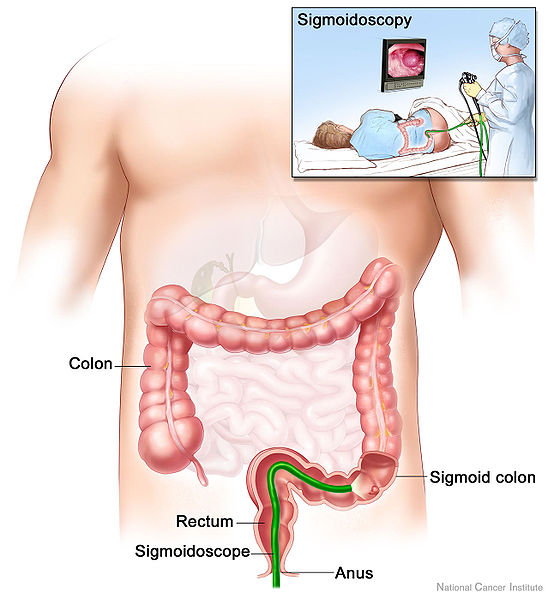sigmoidoscopy

Sigmoidoscopy is examination of the rectum and the sigmoid colon (the lower parts of the large intestine) with a viewing insrument called a sigmoidoscope or proctosigmoidoscope. Sigmoidoscopy is a form of endoscopy. It differs from colonoscopy because whereas sigmoidoscopy allows doctors to view only the lower part of the colon, colonoscopy enables inspection of both the upper and lower sections.
Why it's performed
Sigmoidoscopy is carried out to investigate symptoms relating to the lower gastrointestinal tract, such as bleeding from the rectum or lower colon, and to look for evidence of disorders such as polyps (small benign growths), ulcerative colitis, or colon and rectal cancer.
Attachments at the end of the sigmoidoscope allow a biopsy (removal of a small sample of tissue for analysis) to be carried out if necessary.
How it's done
Sigmoidoscopy is sometimes performed as a follow-up to a rectal examination, in which the doctor exams the rectum with a gloved finger. Sigmoidoscopy may also be preceded by proctoscopy (an examination of the anal canal and rectum with a viewing instrument.


